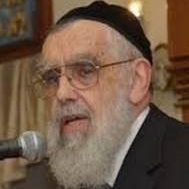What Counts?

It is our eagerness for the one or the other that best defines us as Jews
Waiting and anticipation comprise huge parts of our daily lives. We wait for the bus, for an appointment; we anticipate a trip, a Pesach Seder, completing a tractate of Talmud, the beginning or end of the school year, a good bar of chocolate(or, for some, a good bar, period), for the phone to ring, for that letter to arrive, for that right person to appear. When he became blind, the great John Milton wrote that the mere act of patient waiting can also be a means of serving G-d: “They also serve who only stand and wait.” In the current post-Pesach season of Sefiras Ha’omer, we anticipate the Revelation at Sinai, counting the days between Pesach and Shavuos. But the ultimate of all waiting is the Rambam’s twelfth Principle: achakeh lo bechol yom sheyavo. A Jew waits every day for the Messianic redemption to arrive.
Recently, a new kind of waiting made its debut. Just before the new baseball season, the Atlanta Braves baseball website featured an Opening Day Countdown Clock. It displayed how many days, hours, minutes, and seconds remained before that blessed day would arrive. The clock was in perpetual motion, until, on the last day, for example, we saw the comforting news that there remained only four hours, 20 minutes, and 12 seconds before the first pitch.
And then, in the midst of all this eager anticipation, another set of counting made its appearance: Sefiras Ha'omer, during which we count the 49 days from the second night of Pesach until the Sinai Revelation of Shavuos, in fulfillment of the u’sefartem lachem commandment in Vayikra 23:15 to count seven full weeks between Pesach and Shavuos.
Two sets of counting, two modes of anticipation. Mah nishtanah, how is one counting different from the other? The obvious difference, of course, is that one set looks forward to a season of fun and games while the other looks forward to the giving of the Torah.
But there's another crucial difference. In the baseball counting, the numbers recede with every passing day — from, say, ten days down to five down to zero — while in Sefiras Ha'Omer, the numbers increase, beginning with day one of the count and moving steadily forward, not backward, until the climactic 49th day. The question is: Since we anticipate the giving of the Torah, why not use the countdown method: only 49 days to go, gradually closing the distance until there is only one day to go?
One answer is that in the Omer count, we are not merely anticipating a coming event. Instead, our souls are experiencing, with each passing day, a growing personal regeneration that enables us to receive the Torah. For such an event, mere anticipation is not enough; we have to prepare and lay the groundwork in our very beings to be worthy of the great transformation. For this, we must build up and build toward, symbolized by starting from one and moving ever upward to the pinnacle of 49.
This is not a simple count-down from a goal to us — for example, there are only, say, 25 days to go before the event takes place. Instead, it is a count-up, moving ever forward toward the destination. With every passing day we become more open to receiving the Torah than we were the day before. The focus here is on being ready and prepared, and with each new day we become more enlarged, a more befitting receptacle to receive the Torah. This is not merely anticipation of a forthcoming event; it is a mobilization of the self to be ready for the forthcoming event.
Furthermore, in Sefirah the waiting is not merely passive, but active. With each new day we overcome one more category of the 49 levels of defilement that, according to the mystical Zohar, seeped into us in Egypt; and concomitantly, with each new day we add on one more level to the 49 levels of sanctity that lead toward the Torah. We become gradually more enlarged and enhanced as we approach the foot of Sinai.
Thus, when the 50th day arrives, the task of cleansing has been achieved, the bridge from defilement to holiness has been completed, and the purpose of the Pesach Exodus has been realized. This was not a countdown of the clock, but a run-up of our souls toward the holy destination of receiving the Torah.
All this is theory, albeit crucial. Perhaps, on a practical level, we might all engage in a personal do-it-yourself evaluation, namely: What is it that we most anticipate? Is it the relatively innocuous “opening days” that punctuate our lives, or is it the meaningful spiritual goals that always lie ahead of us? It is our eagerness for the one or the other that best defines us as Jews.
(Originally featured in Mishpacha, Issue 958)
Oops! We could not locate your form.






